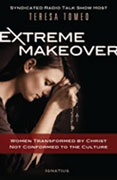Fall 2013 - Episode 9: Hispanic Women, Catechisis and the Church |
|
|
|
|
|
|
Highlighted Saints
|
Teresa of the Andes. Our Lady of Guadalupe
Saint Teresa of the Andes, O.C.D. (July 13, 1900 – April 12,
1920), also known as Saint Teresa of Jesus of the Andes
(Spanish: Teresa de Jesús de los Andes), was a Chilean nun of
the Discalced Carmelite order Teresa was born Juana Enriqueta
Josefina de los Sagrados Corazones Fernández y Solar in
Santiago, Chile into an upper class family. Early in her life
she read the autobiography of the French Carmelite nun Thérèse
of Lisieux, who was later to be canonized herself. The
experience had a profound effect on Juanita's already pious
character, coming to the realization she wanted to live for
God alone. She had to work to overcome a very self-centered
personality toward being one which cared for others above all.
Her further inspiration for this self-transformation was her
upcoming First Communion, which led her to this commitment in
an effort to be worthy of what she was to receive.
In 1919, at the age of 19, Juana entered the novitiate of the
Discalced Carmelite nuns in the township of Los Andes, at
which time she was given the name Teresa of Jesus. Toward the
end of her short life, the new Sister Teresa began an
apostolate of letter-writing, sharing her thoughts on the
spiritual life with many people. Within a few months of her
admission to the Order, however, she contracted typhus, which
was diagnosed as fatal. She thereby died as a professed nun of
the Order on April 12, 1920, which fell during Holy Week that
year.
Teresa remains popular with the estimated 100,000 pilgrims who
visit each year the shrine where her remains are venerated in
the Sanctuary of Auco-Rinconada in the township of Los Andes,
60 miles (100 km.) from Santiago. She is Chile's first saint,
and is especially popular among women and young people.
Our Lady of Guadalupe: In 1531, Jesus' own mother appeared to
humble Juan Diego. The signs -- of the roses, of the uncle
miraculously cured of a deadly illness, and especially of her
beautiful image on Juan's mantle -- convinced the people there
was something to be considered in Christianity. Within a short
time, six million Native Mexicans had themselves baptized as
Christians.
Mary appeared to Juan Diego not as a European Madonna but as a
beautiful Aztec princess speaking to him in his own Aztec
language. If we want to help someone appreciate the gospel we
bring, we must appreciate the culture and the mentality in
which they live their lives. By understanding them, we can
help them to understand and know Christ.
Patron: Our Lady of Guadalupe is patron of the Americas
|
|
|
Janet's Homework Assignment
|
1) Visit and share Hispanics for Life Website –
Hispanosprovida.org
2) Obtain Vida Humana Internacional (CD produced by Adolfo) to
edúcate your Hispanic leaders.
Hispanicsforlife.info
|
|
|
|
|
|
 |
Extreme Makeover
by Teresa Tomeo
Teresa Tomeo pulls together the latest research on
social behavior and trends to demonstrate that women
are harming themselves and their chances for true
happiness by adopting the thoroughly modern, sexually
liberated lifestyle portrayed in magazines and movies.
Packed with not only persuasive statistics but also
powerful personal testimonies, Extreme Makeover shows
that it is not the slogans of the sexual revolution
and the women’s liberation movement that free and
dignify women, but the beautiful teachings of the
Catholic Church. |
 |
Recall
Abortion: Ending the Abortion Industry's Exploitation
of Women
by Janet Morana
Janet Morana exposes the myriad ways abortion exploits
women, and calls for a National recall of this deadly
procedure.
Sign the petition to recall abortion. |
|
|
|
|
|
 |
The Kitchen Madonna:
Patroness of The
Catholic View for Women
Mary was not only Jesus' Mother, but also a housewife.
Her utensils are earthly and heavenly symbols. The key
represents the safety in the house and also the way
into heaven. The kettle symbolizes nourishment for
body and soul. The broom represents cleanliness in the
home and in thoughts and deeds.
Available from EWTN Religious Catalogue
|
 |

Magnificat is a lavishly printed, easy-to-read
pocket-sized worship aid, of more than 400 pages.
Magnificat can be used to follow the daily Mass and
can also be read at home for personal or family
prayer.
Available at Magnificat |
|
|
Consider praying the Divine Office on a daily basis.
The Divine Office provides psalms and prayers to be
prayed at different times of the day.
See
www.divineoffice.org.
|
|
|
.
|